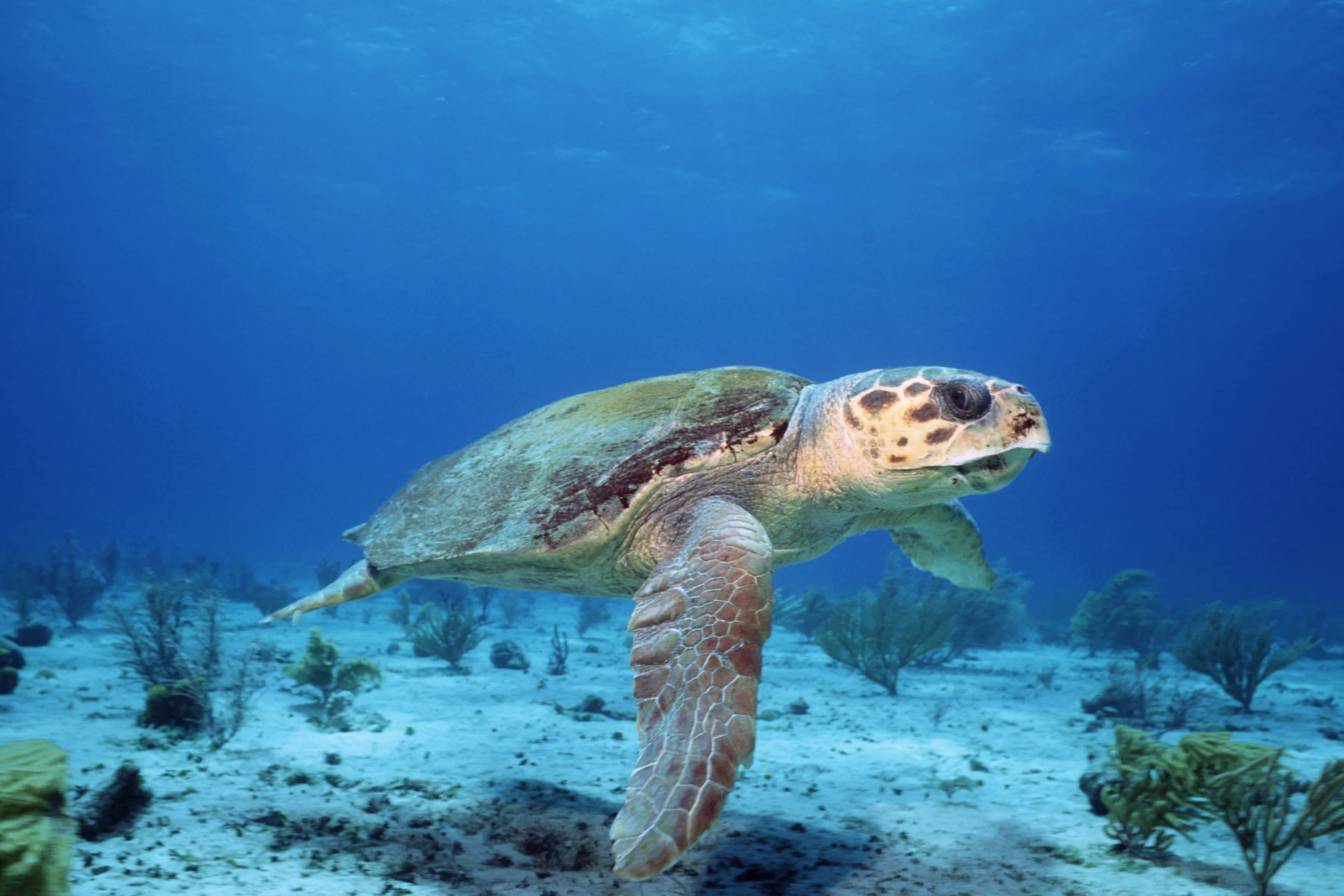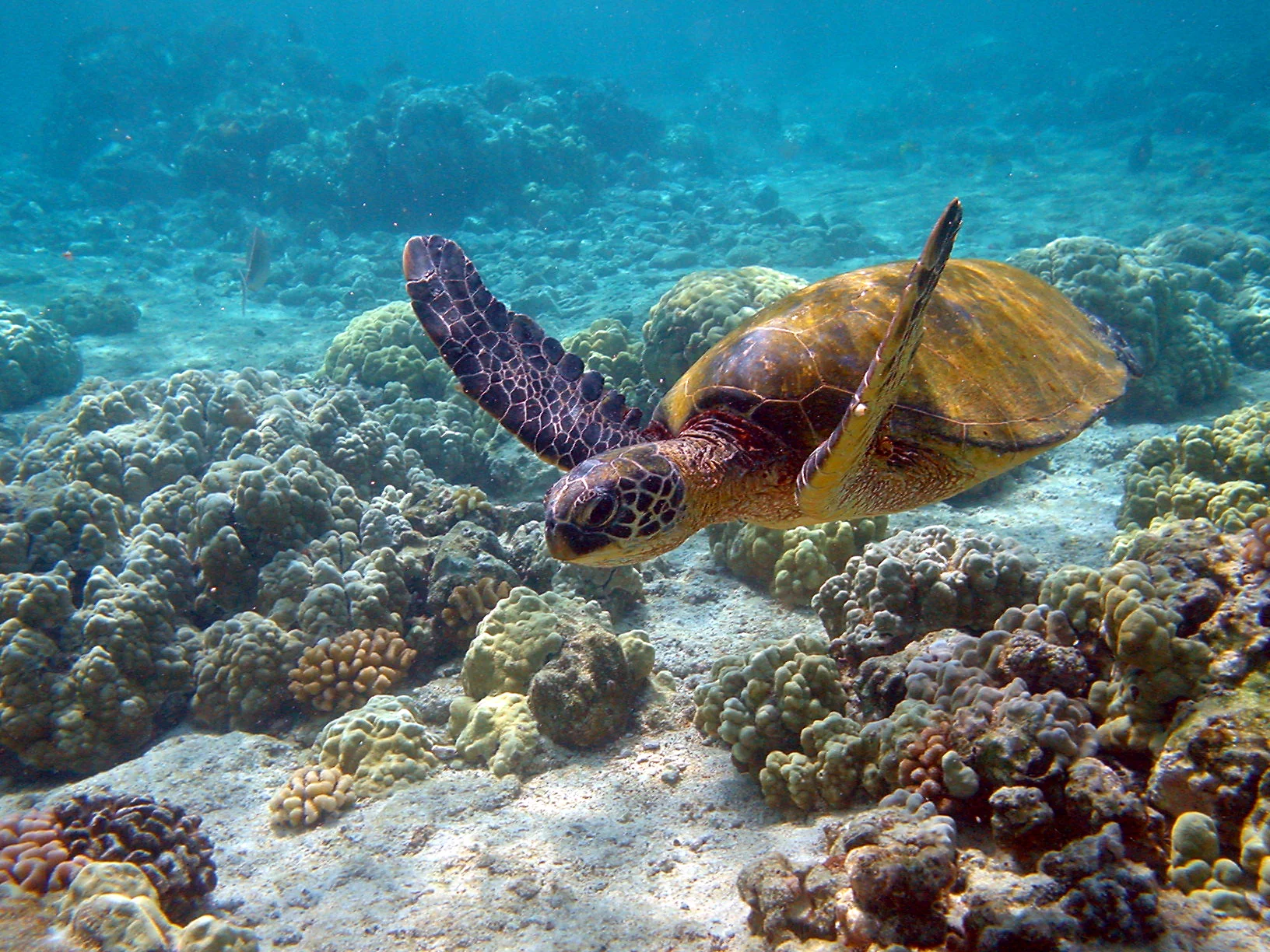OVERVIEW
The green turtle is a large sea turtle found throughout many of the tropical and subtropical seas of the world, primarily in the Atlantic and Pacific oceans. They are one of the largest sea turtles and the only herbivore among the many species. Green turtles are in fact named for the color of their cartilage and fat as opposed to their shells. Like other sea turtles, they migrate long distances between feeding grounds and the beaches from where they hatched. Green turtles are endangered by overharvesting of their eggs by humans, hunting of adults, being caught in fishing gear and loss of nesting beaches.
DID YOU KNOW?
- Green turtles are distributed worldwide and nest in more than 80 countries. Nearly all Hawaiian green sea turtles migrate to nest at French Frigate Shoals in the Northwest Hawaiian Islands, located approximately 500 miles northwest of Honolulu. The Northwest Hawaiian Islands are designated as a refuge and are restricted to scientific research only.
- The green turtle is the only turtle species known to come on shore regularly to bask. Basking only occurs in Hawaii, the Galapagos Islands, and some parts of Australia.
- The green turtle's scientific name is Chelonia mydas.
- The green turtle is listed as endangered in the United States and around the world by the IUCN.
- Green turtles are believed to improve the health of seagrass beds and associated microhabitats. They graze the beds, taking the tops off of leaf blades whilst avoiding the roots. With a daily trim, the seaweed will actually grow healthier and faster!







